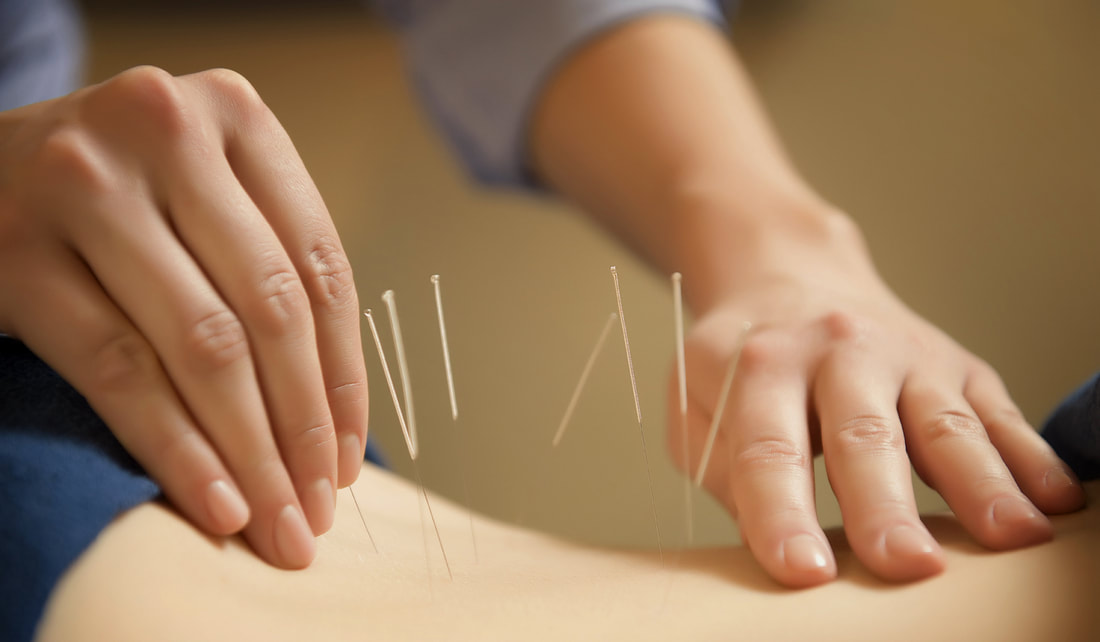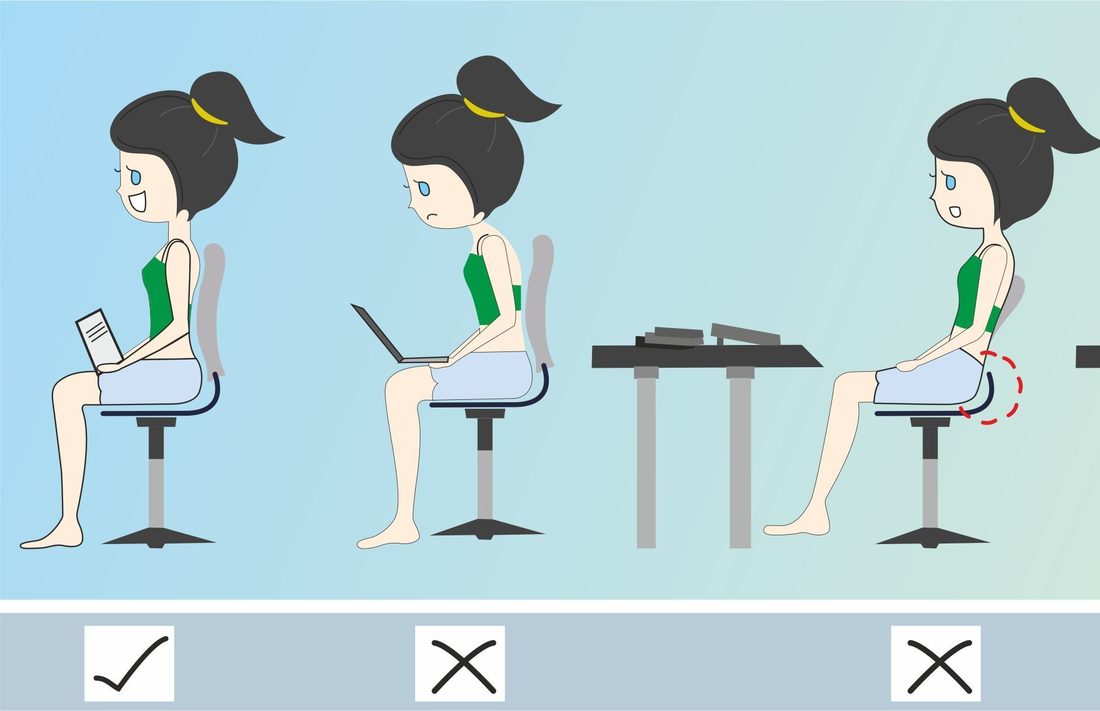|
Most people are unaware of the bad habits they have developed that affect both posture and increased weight bearing on your muscles. The solution to your pain can be as simple as adjusting the ways in which you position your body throughout the day so your muscles can stay in a more neutral state.
1. Crossing legs when sitting This unnatural elevation of the hip compresses the opposite side, which is carrying more of your body weight. Your spine can also be pulled out of alignment and create pressure on your sciatic nerve, causing both back and hip pain. If it isn't comfortable having your feet flat on the floor, try overlapping your ankles instead of your legs. 2. Hunching shoulders and craning neck while sitting at your desk Most people with desk jobs subconsciously adopt bad posture while sitting in front of the computer. The problem is that leaning forward and allowing your shoulders to collapse compresses your chest muscles and strains your shoulders and upper back. Two simple tricks can instantly improve your posture: use a supportive chair pillow for your lower back and keep your screen at eye level to prevent you from tilting your head up or down to see. 3. Sleeping on stomach versus side Sleeping on your stomach can cause a lot of strain on your back and neck as the pillow adds an unnatural lift. However, sleeping on your side also causes your head be turned to either the right or left for an extended period of time, which also causes pain. Therefore, the best position for sleeping is lying on your back, with only one pillow beneath your head. Consider placing a pillow between your knees to help support your spine and stabilize the middle of your body while sleeping on your side. If you must sleep on your stomach, limit yourself to only one pillow. 4. Carrying a heavy bag or purse Carrying a large amount of weight on your shoulders can form uneven muscle tone and disrupt the blood flow, which can eventually cause discomfort in your neck, shoulders, and back. Switch to a rolling briefcase or cross-body bag, which both evenly distribute weight, if you have to carry a lot. 5. Wearing high heels Wearing high heels (two inches or higher) often can cause your calf muscles to shorten by 13 percent over the course of just two years. This is mainly due to the increased compression of your calf muscles and tendons, as well as inflammation of the Achilles tendon. Switch to flat or low-healed shoes with rounded or square toe boxes to prevent the wearing down of your calf muscles. Keep your calf muscles strong with regular stretches and exercises.
2 Comments
Acupuncture is the traditional Chinese practice of using needles to heal and prevent health related issues. It helps many issues including:
Joint Venture Physiotherapy treats many Thornhill and GTA residents who suffer from injuries that occur at the workplace. It is important to be aware of and understand the proper regulations and practices that will ensure you are safe and healthy at work.
The most common injuries that occur in the workplace are: sprains and strains (most likely of the back), headaches, and carpal tunnel syndrome. Back pain at work can occur from both too much standing and too much sitting. Lifting objects incorrectly can cause serious damage while prolonged sitting can lead to poor posture. Although many headaches can be associated with stress, there are environmental and ergonomic factors that can lead to severe headaches in workers such as improper lighting, eyestrain from computer screens, poor air quality and loud noises. Carpal tunnel syndrome is usually caused from repetitive activities that overwork the muscles in the hand, wrist and forearm and can lead to surgical correction. Be aware of the environment in which you work in order to prevent unnecessary health risks. Assess any obvious hazards, tools and chair designs, standing and sitting posture as well as continuous bending and lifting and understand your rights to a healthy work environment. Having good posture is one of the best ways to prevent back pain and spinal issues. These 5 steps can be taken to improve your posture at home:
Be aware of your poor habits that have caused incorrect posture while you work to fix it. Imagine you have a book resting on your head or string tied to the top of your head while sitting, driving or walking and you will see a difference in your posture in the long run. Visit a physiotherapist to get an assessment on your posture, receive a treatment plan and recommendations on products designed to improve posture. Applying heat or ice to sore muscle aches is an effective and inexpensive self-treatment option. However, there has always been the confusion of which to use.
Following an acute injury (less than 48 hours onset) use the RICE acronym: Rest, Ice, Compression, and Elevation.
Both heat and ice should only be applied for 10-15 minutes at a time. Do not use heat over an open wound, over areas of decreases sensitivity, where circulation is impaired, over tumors, and for acute injuries. Do not use ice over an open wound, if you have hypersensitivity, Peripheral Vascular Disease or Raynaud’s disease. Whenever you are uncertain about which to apply, consult this chart. |

 RSS Feed
RSS Feed




